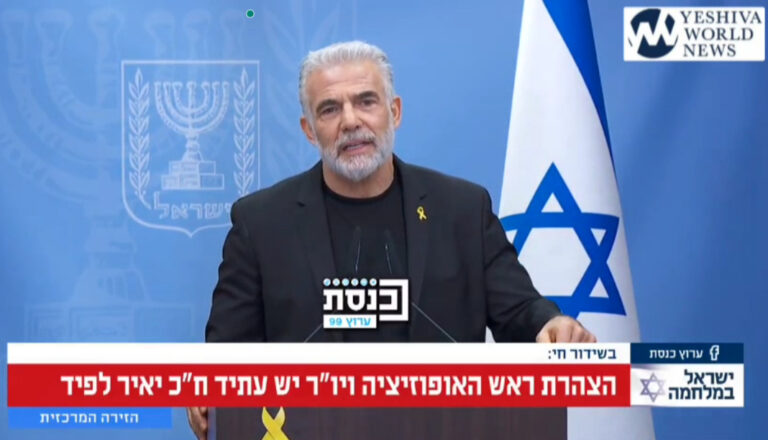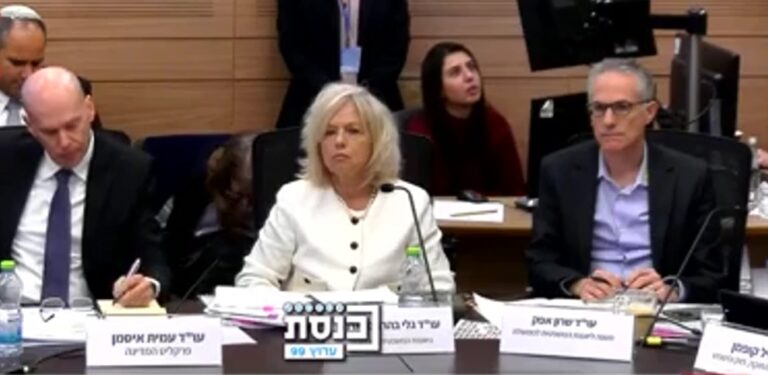This week’s Sedra starts with Moshe Rabeinu’s recounting of the travels and encampments of Klal-Yisroel during their time in the Midbar. The first Passuk of the Sedra states: “these are the journeys of Klal-Yisroel when they left Mitzraim under the hand of Moshe and Aharon”. The next Passuk states: “and Moshe wrote their goings forth according to their journeys at the bidding of Hashem”. The Mefarshim (see Iban Ezra; see also Baal Haturim and Sephorno) explain that the Passuk means that they traveled following Hashem – that Hashem would cause the Ananei-HaKavod (clouds of glory) to move and Klal-Yisroel would pick up and follow.
There is an interesting contrast here: the Torah first tells us that they travelled under the hand of – in other words, following — Moshe and Aharon, and yet in the next Passuk it seems to place all the emphasis of their travels as being travelling in the footsteps of Hashem. There is another difference between the first Passuk and the second. In the first Passuk it attributes Yetzias Mitzraim (the exodus from Egypt) as being in the hands of Moshe and Aharon, however in the next Passuk the reference to the exodus is omitted. Why is it that when the Passuk refers to Yetzias Mitzraim it is ביד משה ואהרןwhereas when the Passuk talks about our following Hashem there is no mention of Yetzias Mitzraim?
In the first Haftorah of the Tlasa Depuranusa (the Three Weeks) Hashem tells Yermiyahu Hanavi to tell Klal-Yisroel that Hashem remembers the Chesed of our youth and the love from when we were united with Hashem – how we followed after Him in the Midbar, in a desolate land. Yirmiyahu Hanavi is not asked to tell Klal-Yisroel anything about our leaving Egypt.
Hashem took us out of Mitzraim the same way He led us through the Midbar. However, we did not leave Mitzraim following Hashem in the same way as we did throughout the Midbar. The exodus wasn’t a choice. After Hashem brought upon Mitzraim all the Makos (plagues) the Egyptians didn’t want us around – the Egyptians wanted us out. Moshe and Aharon, through the Makos and the final period in Egypt had proven themselves as leaders. As such Klal-Yisroel chose to follow Moshe and Aharon out of Egypt. However once out of Egypt Klal-Yisroel could have done the most logical thing: they could have insisted on finding the closest livable area outside of Egypt and set up their homes. Even had Klal-Yisroel for some reason desired to go to Eretz-Yisroel they could have drawn a straight line from Egypt to Israel and thereby gotten to their ultimate destination in a very short time. In either of these situations they most likely would have turned to Moshe and Aharon for leadership. Klal-Yisroel however decided that no – they would follow Hashem throughout the Midbar even if it meant traveling in circles or taking detour after detour.
The first Passuk in the Parsha starts with Yetzias-Mitzraim. Yetzias Mitzraim demonstrated Klal-Yisroel’s ability to recognize Moshe and Aharon as leaders. The second Passuk deals with Klal-Yisroel in the Midbar staying true to Hashem and following Hashem even if it was in circles.
The Divrei Chizuk (words of encouragement) Hashem instructed Yirmiyahu Hanavi to relay to us contains two important lessons: firstly that Klal-Yisroel didn’t settle for anything short of Eretz-Yisroel no matter how convenient any other locale might have been. Secondly, and equally as important as the first, Eretz-Yisroel isn’t something that necessarily comes easily. Rather, it is something that must come through adhering to Hashem no matter how difficult it may seem. We must merit Eretz-Yisroel and work towards it על פי ה even if at times doing so might seem counterproductive just as Klal-Yisroel following Hashem in what seemed in the Midbar like roundabout ways leading nowhere.
A very warm Good Shabbos, Rabbi Y. Dov Krakowski










